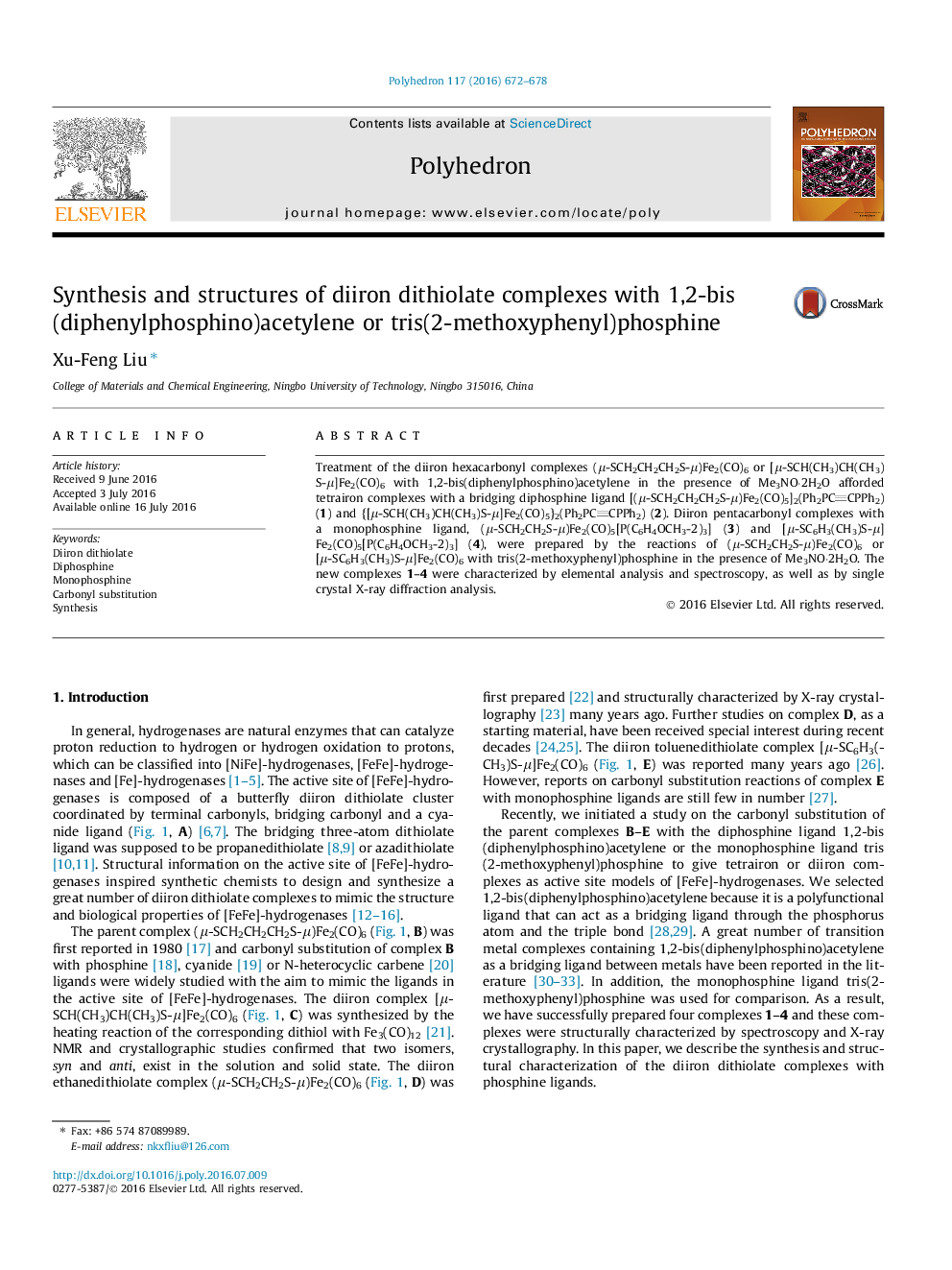| Article ID | Journal | Published Year | Pages | File Type |
|---|---|---|---|---|
| 1336255 | Polyhedron | 2016 | 7 Pages |
Treatment of the diiron hexacarbonyl complexes (μ-SCH2CH2CH2S-μ)Fe2(CO)6 or [μ-SCH(CH3)CH(CH3)S-μ]Fe2(CO)6 with 1,2-bis(diphenylphosphino)acetylene in the presence of Me3NO·2H2O afforded tetrairon complexes with a bridging diphosphine ligand [(μ-SCH2CH2CH2S-μ)Fe2(CO)5]2(Ph2PCCPPh2) (1) and {[μ-SCH(CH3)CH(CH3)S-μ]Fe2(CO)5}2(Ph2PCCPPh2) (2). Diiron pentacarbonyl complexes with a monophosphine ligand, (μ-SCH2CH2S-μ)Fe2(CO)5[P(C6H4OCH3-2)3] (3) and [μ-SC6H3(CH3)S-μ]Fe2(CO)5[P(C6H4OCH3-2)3] (4), were prepared by the reactions of (μ-SCH2CH2S-μ)Fe2(CO)6 or [μ-SC6H3(CH3)S-μ]Fe2(CO)6 with tris(2-methoxyphenyl)phosphine in the presence of Me3NO·2H2O. The new complexes 1–4 were characterized by elemental analysis and spectroscopy, as well as by single crystal X-ray diffraction analysis.
Graphical abstractFour diiron dithiolate complexes, [(μ-SCH2CH2CH2S-μ)Fe2(CO)5]2(Ph2PCCPPh2) (1), {[μ-SCH(CH3)CH(CH3)S-μ]Fe2(CO)5}2(Ph2PCCPPh2) (2), (μ-SCH2CH2S-μ)Fe2(CO)5[P(C6H4OCH3-2)3] (3) and (μ-SC6H3(CH3)S-μ)Fe2(CO)5[P(C6H4OCH3-2)3] (4), were prepared by the carbonyl substitution of (μ-SCH2CH2CH2S-μ)Fe2(CO)6, [μ-SCH(CH3)CH(CH3)S-μ]Fe2(CO)6, (μ-SCH2CH2S-μ)Fe2(CO)6 or [μ-SC6H3(CH3)S-μ]Fe2(CO)6 with 1,2-bis(diphenylphosphino)acetylene or tris(2-methoxyphenyl)phosphine in the presence of Me3NO·2H2O. The new complexes 1–4 were characterized by elemental analysis, spectroscopy and single-crystal X-ray diffraction analysis.Figure optionsDownload full-size imageDownload as PowerPoint slide
